Thanks to IoT, the oil industry is experiencing unprecedented transformation. The industry’s rapid adoption of IoT devices creates new opportunities to improve efficiency and reduce costs. With infrastructure found in often remote and sometimes hostile environments, automated monitoring of tanks and pipelines shift the way oil and gas operations work. In fact, IoT significantly improves operational efficiency for everything from real-time monitoring and predictive maintenance to asset monitoring and improved safety. In this article, we outline the advantages, use cases, technologies, challenges, solutions and case studies associated with the benefits of IoT in oil and gas.
Get Our eBook
Learn how to overcome communication challenges in the oil and gas industry
Download PDF
Topics in this blog:
Advantages
Use Cases
Technologies
Challenges
Solutions
Case Studies
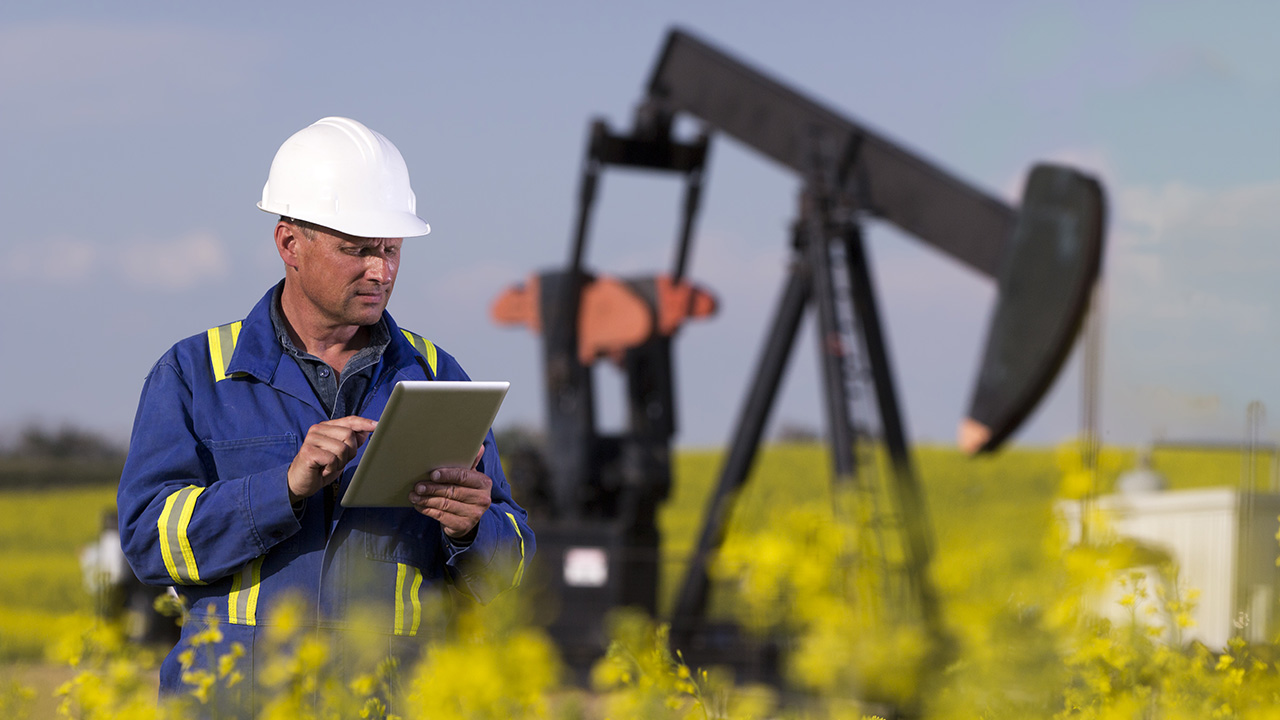
The Role of the IoT in Oil and Gas
.jpg?lang=en-US) The Internet of Things plays a crucial role in the oil and gas industry across every operation. For example, IoT sensors watch equipment performance and track inventory. IoT devices on drill rigs can collect and share all sorts of real-time drilling parameters such as conditions and equipment status. In the refining and processing segment, operators receive real-time updates on temperature, flow rates and pressure within crucial processes. Best of all, operators can monitor many of these systems remotely, creating incredible efficiency. As a result of such powerful impact, it is no wonder that the IoT in oil and gas market is skyrocketing. According to Intellisoft, the IoT in oil and gas market may reach $27.7 billion by 2032, a CAGR of 9.7%. Many different data points suggest that IoT will continue to transform the oil and gas industry.
The Internet of Things plays a crucial role in the oil and gas industry across every operation. For example, IoT sensors watch equipment performance and track inventory. IoT devices on drill rigs can collect and share all sorts of real-time drilling parameters such as conditions and equipment status. In the refining and processing segment, operators receive real-time updates on temperature, flow rates and pressure within crucial processes. Best of all, operators can monitor many of these systems remotely, creating incredible efficiency. As a result of such powerful impact, it is no wonder that the IoT in oil and gas market is skyrocketing. According to Intellisoft, the IoT in oil and gas market may reach $27.7 billion by 2032, a CAGR of 9.7%. Many different data points suggest that IoT will continue to transform the oil and gas industry.

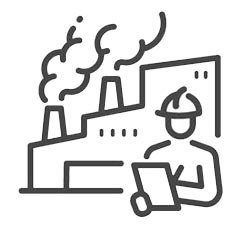 Incredibly, IoT in oil and gas can improve every operational aspect across the industry, significantly improving operational efficiency. Real-time monitoring of workers and equipment can improve safety. Predictive maintenance that uses machine learning to alert about equipment failure early can save millions of dollars. Real-time environmental monitoring can detect over-the-limit emissions and alert operators before an infraction occurs. These and many more IoT applications in oil and gas made possible thanks to advanced sensors connected across the entire oil and gas operation.
Incredibly, IoT in oil and gas can improve every operational aspect across the industry, significantly improving operational efficiency. Real-time monitoring of workers and equipment can improve safety. Predictive maintenance that uses machine learning to alert about equipment failure early can save millions of dollars. Real-time environmental monitoring can detect over-the-limit emissions and alert operators before an infraction occurs. These and many more IoT applications in oil and gas made possible thanks to advanced sensors connected across the entire oil and gas operation.
Efficiency
One of the most impactful IoT applications in the oil and gas industry is the ability to check and manage assets remotely. Asset monitoring IoT oil and gas sensors attached to industrial equipment wirelessly communicate the status of everything from pumps to pipelines. Because vibration, pressure temperature and more get collected and shared to a digital platform in real-time, operators can find issues before they affect operations. For example, an IoT based gas leak detection system can send an alert that shows a potential leak can avoid spills and financial losses from a failure in the pipeline.
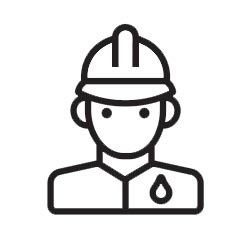
Safety
Fire and explosions pose constant risks to worker safety in the oil and gas industry, making it a high-risk profession. However, a Deloitte report shows that companies that deploy IoT wearables to workers reduce workplace accidents by 48%. IoT wearables. Embedding sensors into safety vests and hard hats can detect potential hazards and alert the wearer, preventing an accident. And if an incident does occur, IoT wearables can alert emergency responders with location, environmental conditions and even the wearer’s vital signs.
Real Time, Remote Visibility
The combination of drones and 360 cameras means that companies in the oil and gas industry now have a way to inspect operations remotely. Instead of workers manually inspecting a facility, drones can now fly over installations, collecting data and wirelessly communicating the information in real time. By dropping manual inspections, companies can reduce travel costs, improve worker safety and get crucial data more quickly. As a result, remote inspections using IoT devices can create game-changing value for the oil and gas industry.

Enhanced (AI) Data Analysis
IoT sensors can measure everything from equipment states and worker vitals to environmental conditions and equipment locations. When enough of this raw data is collected and analyzed, teams can gather all sorts of insights. Managers begin to find inefficient processes, get alerts about faulty equipment before it fails and even suggestions for optimizing resource usage. With artificial intelligence and machine learning applied to this data, analytics platforms can find hidden patterns that suggest operational changes to reduce costs, maximize resources and improve safety.
Environmental Regulation
In the Spring of 2024, the US Environmental Protection Agency released new regulations that require significant changes in the oil and gas industry. As a result, the industry now must report on an expanded list of emission sources. Thanks to IoT sensors deployed to watch areas such as flare stacks, operators can adjust combustion processes to minimize flaring and reduce their carbon footprint.

 It is no wonder that IoT is experiencing rapid growth in the oil and gas industry. The number of IoT use cases in oil and gas is almost limitless. Whether it is remotely checking facilities or predicting equipment failures, IoT devices create needed efficiency while also helping to reduce costs. Connected to an IoT platform, operators can manage thousands of devices from a single screen, sending software updates to devices in remote locations and analyzing insights from all the sensor data. Consider the following use cases for IoT in the oil and gas industry:
It is no wonder that IoT is experiencing rapid growth in the oil and gas industry. The number of IoT use cases in oil and gas is almost limitless. Whether it is remotely checking facilities or predicting equipment failures, IoT devices create needed efficiency while also helping to reduce costs. Connected to an IoT platform, operators can manage thousands of devices from a single screen, sending software updates to devices in remote locations and analyzing insights from all the sensor data. Consider the following use cases for IoT in the oil and gas industry:
- Monitoring pipelines and detecting leaks: IoT sensors can detect invisible vapors when a leak has occurred. Once detected, the IoT system communicates alerts to operators who can shut down the pipeline and avoid catastrophic loss.
- Keeping workers safe: Wearable sensors attached to safety vests and helmets can monitor workers' vital signs and environmental temperature to send alerts when sensors detect dangerous changes.
- Remote monitoring: Tracking the location of vehicles and equipment with IoT sensors not only helps managers keep track of inventory but can also find broken down equipment remotely and send aid to the location.
- Monitoring tank pressure: No one wants oil leaking in the environment from damaged storage tanks. IoT monitoring systems use sensors to detect problems with the tank operators can repair them before the leak becomes an emergency.
IoT in Upstream Oil and Gas
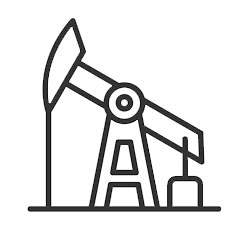 In the upstream part of the oil and gas industry, IoT sensors installed on drilling rigs, wellheads, and other equipment allows for real-time monitoring. When anomalies occur, operators can schedule maintenance to avoid equipment failure. Operators can even employ IoT platforms to enhance drilling techniques or remotely see drilling operations.
In the upstream part of the oil and gas industry, IoT sensors installed on drilling rigs, wellheads, and other equipment allows for real-time monitoring. When anomalies occur, operators can schedule maintenance to avoid equipment failure. Operators can even employ IoT platforms to enhance drilling techniques or remotely see drilling operations.
Drilling Optimization
IoT sensors on drilling rigs can send equipment data to an analytics platform. Using machine learning, the analytics platform can provide actionable suggestions for drill operators and even predict equipment failures before they occur.
Pipeline Integrity Management
Older pipelines run the risk of failure and leakage. Traditionally, this means increasing manual inspections that drive up the cost of the project. With drones equipped with sensors that fly over pipelines in any geography, gas leak detection IoT devices keeps workers safe and able to address the problem quickly.
Process Optimization and Control
 As processes become more complex, they become more difficult to optimize manually. In fact, large oil companies manage over 50,000 wells. With IoT analytics platforms, upstream oil & gas companies can watch oil extraction equipment remotely and in real-time. Then, if a leak is detected, automated systems can shut down pipelines automatically.
As processes become more complex, they become more difficult to optimize manually. In fact, large oil companies manage over 50,000 wells. With IoT analytics platforms, upstream oil & gas companies can watch oil extraction equipment remotely and in real-time. Then, if a leak is detected, automated systems can shut down pipelines automatically.
IoT in Midstream Oil and Gas
In the midstream segment of the oil and gas industry, operators move oil and natural gas from its extraction points to get converted to fuels which then get delivered to customer locations. All along the way, sensors check the pump stations, IoT gas meters, storage sites, interconnection points, and valves to improve efficiency.
Monitoring Crude Pressure in Pipelines
The midstream oil and gas industry segment can use specially designed flow meters that measure the pressure of the oil in the pipeline. When a change in pressure occurs, an automated alert can show a leak caused by corroded pipes or theft.
 Storage Tank Monitoring
Storage Tank Monitoring
IoT sensors in fuel storage tanks can monitor everything from tank levels, pressure and flow rates. Automated alerts allow operators to act when the pressure goes above or below a certain level.
Pipeline Leakage
Smart valves, pumps and filters that use IoT devices to detect leakage in a pipeline addresses one of the most critical issues in the oil and gas industry. Ruptured pipelines can lead to dangerous conditions such as contamination and even explosions.
IoT in Downstream Oil and Gas
The downstream sector of the oil and gas industry deals with everything from refining fuels and delivering fuels from refineries to gas stations to processing waste products. IoT combined with AI, machine learning and automation can reduce costs, enhance asset use, improve reliability, and improve safety. IoT devices can minimize the environmental footprint, reduce downtime and improve operational efficiency.
 Improving Downstream Logistics
Improving Downstream Logistics
Real-time IoT monitoring through digital sensors in oil and gas logistics improves materials transport timing, routes, fuel-efficiency and transparent materials tracking. For example, gas cylinder tracking IoT sensors improve the overall understanding of fuel cylinder transportation through the supply chain.
Ensuring Refinery Safety
An IoT gas sensor can detect when oxygen concentrations drop below a safe limit for workers. For example, methane, butane and other gases used in oil refineries in high concentrations can displace oxygen in a space, leaving workers vulnerable to these asphyxiants. IoT devices can alert workers before the situation becomes critical, giving them ample time to move to safety.
Maintaining Environmental Compliance
In 2024, the EPA enacted a package of regulations to curb the release of ethylene oxide and chloroprene. When fully enacted, this new standard will curb the release of these pollutants by 80% from equipment covered under the new rule. While refineries can use various methods to limit pollutants released into the environment, an Internet-connected system can supply a real-time IoT smart gas monitoring system and automated alerts. By receiving early warnings, facility operators can adjust emissions before they exceed permissible limits.
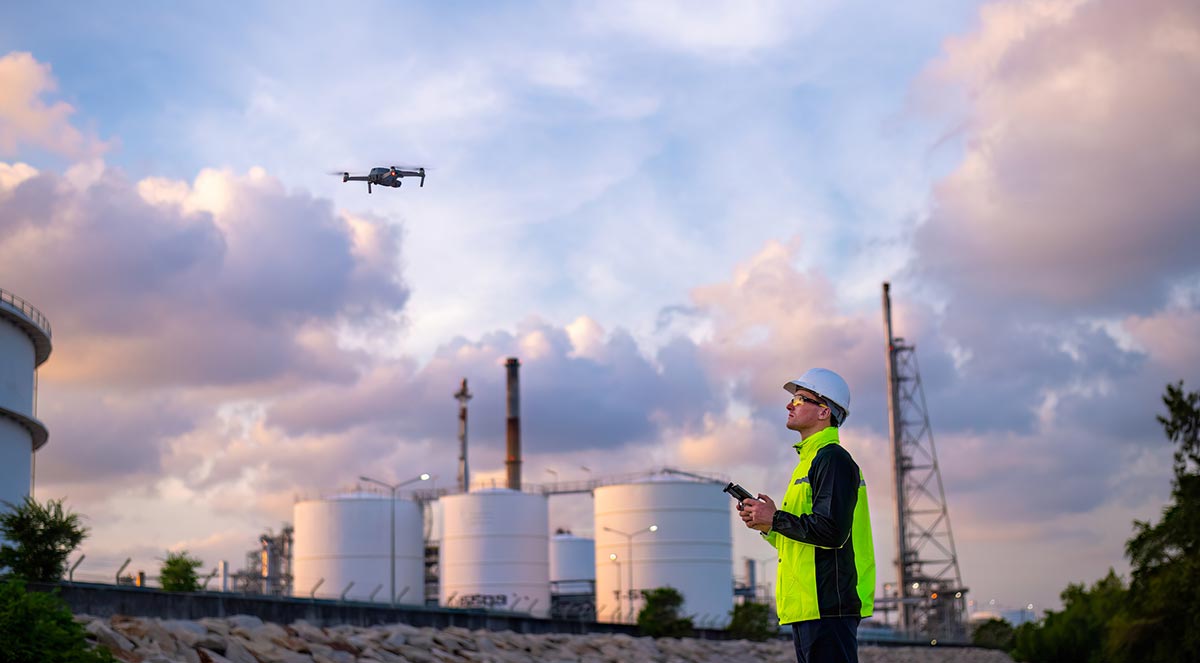
Incredible new efficiencies become possible through the use of IoT in oil and gas. The Internet of Things consists of different technologies working together to create a system of sensing, connectivity, data transmission and analysis. Remote sensors, cloud computing, network connectivity devices, machine-to-machine communication and data analytics make up the core technology pieces of IoT. In this section we will explore these key parts of an IoT system and how they work together to create transformational value for the oil and gas industry.
Remote Sensors
With the adoption of IoT devices, every segment of the oil and gas industry can experience transformation. No more manual inspections and risky human interventions. Instead, operators can tap into an incredible array of remote sensing solutions to check and communicate conditions in remote and sometimes hazardous locations from the safety of a command center.
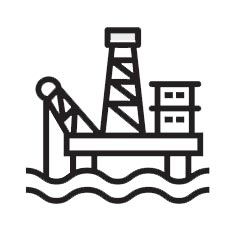
- Oil rig monitoring — Oil rig operators can instantaneously measure environmental conditions such as wave height and wind speeds from sensors placed across the rig. Sensors can also measure critical operational parameters such as temperature, pressure and vibration levels to help workers improve operations safely.
- Pipeline operations — Radio Frequency level sensors in pipeline systems allows operators check on the status of the pipelines in real time, allowing them to respond quickly when flow rates or levels deviate from normal ranges.
- Fleet management — IoT sensors for oil and gas can enable tanker and vessel monitoring to measure location, condition, idle time, cargo status and more in real time to optimize carrier use.
Wireless Network Connectivity
In parts of the world, the oil and gas industry struggles with aging infrastructure. As a result, most oil and gas companies plan to invest more in digital technologies to improve maintenance rather than replace infrastructure and machinery. Network connectivity technologies create the heart of any digital remote monitoring solution. Popular wireless technologies include used in oil and gas IoT solutions include LoRA and LoRaWAN, LTE, NB-IoT, Zigbee, Wi-Fi and Bluetooth Low Energy.

These protocols support a wide range of oil and gas applications:
- Remote oil rig monitoring — Oil fields and rigs found in remote locations often require low power consumption wireless networking solutions such as Zigbee, which can support large mesh networks of sensors that collect data from across an oil rig.
- Control room communications — For close-proximity data communications such as control rooms, Wi-Fi antennas can create reliable connectivity for transmitting data.
- Drones equipped with cameras on offshore oil rigs — This technology is capable of reducing manual inspections by 75% and reducing the time to complete an inspection by 90% with the use of private high-speed 5G networks.
Data Analytics
 Collecting sensor data across all segments of the oil and gas industry creates a huge opportunity to streamline operations, improve safety, predict equipment failures and more. But none of these use cases work without data analytics.
Collecting sensor data across all segments of the oil and gas industry creates a huge opportunity to streamline operations, improve safety, predict equipment failures and more. But none of these use cases work without data analytics.
Centralized platforms provide a dashboard through which operators can get insights, manage large networks of devices and learn about emerging equipment issues remotely. These cloud-based platforms synthesize sensor data, sometimes with the help of AI, to create insights that operators may otherwise miss.
- Oil and gas production — A 2022 McKinsey study found that real-time edge analytics improved equipment effectiveness by up to 10%
- Oil exploration — 5G-enabled high-resolution seismic data analyzed in real time helps accurately discover potential reserves
- Pipeline monitoring — Combining advanced analytics with AI and machine learning in real time can produce real-time insights such as detecting leaks before they cause environmental damage or regulatory issues

The Future of IoT in Oil and Gas
The oil and gas industry faces pivotal decisions about its place in the future global energy system as clean energy systems advance. In transitions toward net zero, oil and gas will significantly decline over time. However, staying profitable during the eventual transition to clean energy means tapping into technology to reduce costs and streamline operations. That’s where IoT technologies can help tremendously. Oil and gas companies already collect all sorts of data
.jpg?lang=en-US)
Connected Workers
Powered by 5G connectivity, Internet-connected devices such as headsets, mobile devices and more can be used by technicians and operators to access complex technical information from an IoT network to make quicker on-site decisions. Many IoT use cases in oil and gas industry will appear, but real-time troubleshooting with remote experts and a camera will improve the onsite maintenance process.
Automation at the Edge
Remote facilities such as offshore rigs often struggle with reliable connectivity. Edge computing, processes and stores data closer to the source, reducing communications to the data center. Adding AI at the edge will enable more automated decision-making. The convergence of edge, AI and IoT in oil and gas will improve operational efficiency and worker safety.
Digital Twin Technology
Digital twin technologies combine to enable virtual models of physical assets. In the oil and gas industry, a digital twin might model equipment to predict when maintenance is needed. However, digital twins can model many other processes and infrastructure. By combining AI, machine learning, blockchain and AR/VR with IoT technologies, digital twins will help oil and gas companies digitally transform many parts of their operations.

The Internet of Things promises to transform the oil and gas industry, but connectivity is still challenging. Often, installations in remote locations don’t have the connectivity to support an effective IoT strategy. Additionally, oil and gas companies may not have the ability to set up the hardware and associated infrastructure needed to support current and future IoT applications. Traditional communications technologies include push-to-talk and paper-based manuals, which hardly position the industry to become more efficient and effective across all its segments.

- Rural or remote Internet connectivity — Many oil and gas installations are in remote areas and often lack adequate connectivity to enable IoT. In fact, many companies still rely on legacy systems and infrastructure. Modernizing these systems isn’t simple as they will require extra funding and ability.
- Collecting, storing, securing, and analyzing data — Effective data management means ensuring data quality, security and accessibility for making informed decisions. In the oil and gas industry handles lots of data across its segments related to discovery, extraction, refineries, processing facilities and distribution logistics. Key data challenges for the oil and gas industry relate to the prevalence of manual processes and decentralized applications. Without centralized data management, data stays in siloes and untapped by advanced analytics and AI platforms.
- Hardware and infrastructure set-up and scaling — One of the biggest IoT challenges facing the oil and gas industry is integrating IoT with its legacy systems. Then, understanding how and when to scale the growing number of devices and selecting the right equipment to support current and future needs keep the industry from getting the most from an IoT solution.
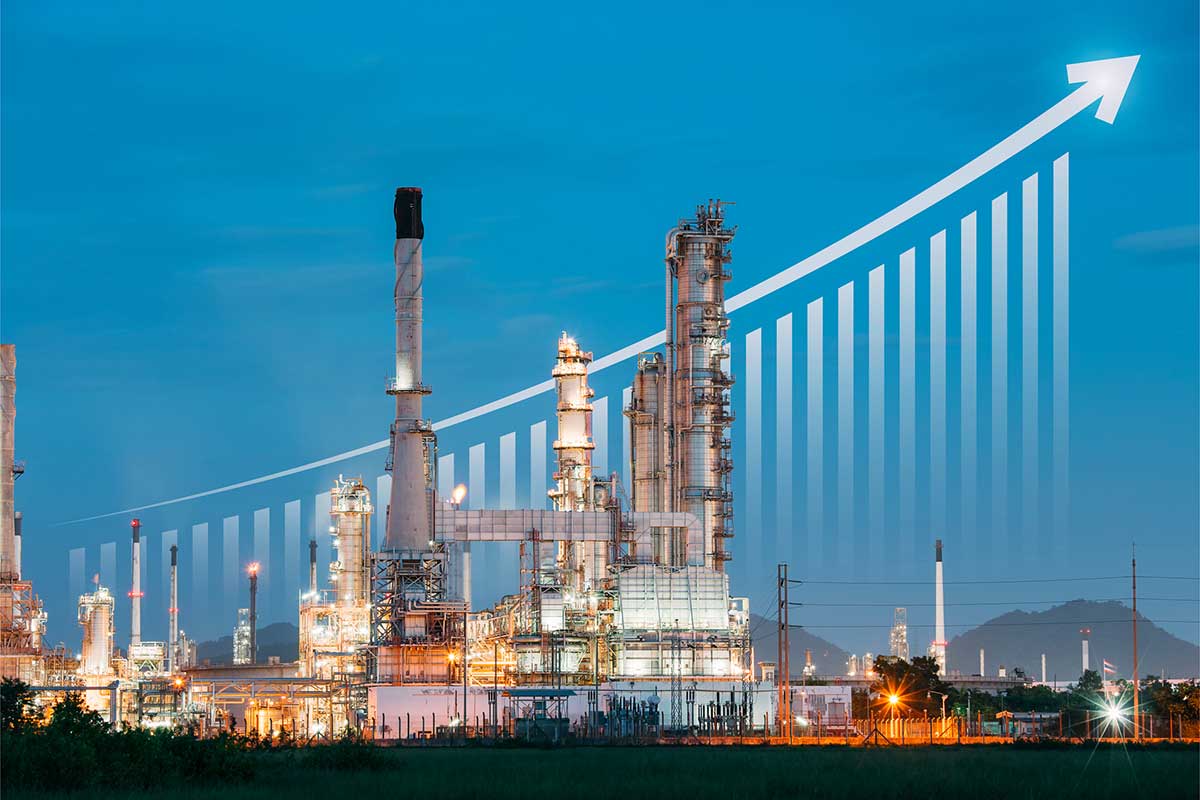
Digi’s industrial communications solutions power some of the respected companies in the oil and gas industry. Our industrial-hardened cellular routers offer rugged and secure operation even in the most demanding environments. Digi supplies end-to-end IoT services, including a command center for product lifecycle management, value added services such as Containers and WAN bonding, a remote management platform, embedded software and cellular edge devices.
Our solutions support everything from well pad sites and pipeline operations to tanks and offshore assets. With Digi, our customers gain an advantage with ready-to-deploy solutions, future-ready products, robust security architecture, proven reliability, dedicated support staff and international certification experience.
Industrial Cellular Routers
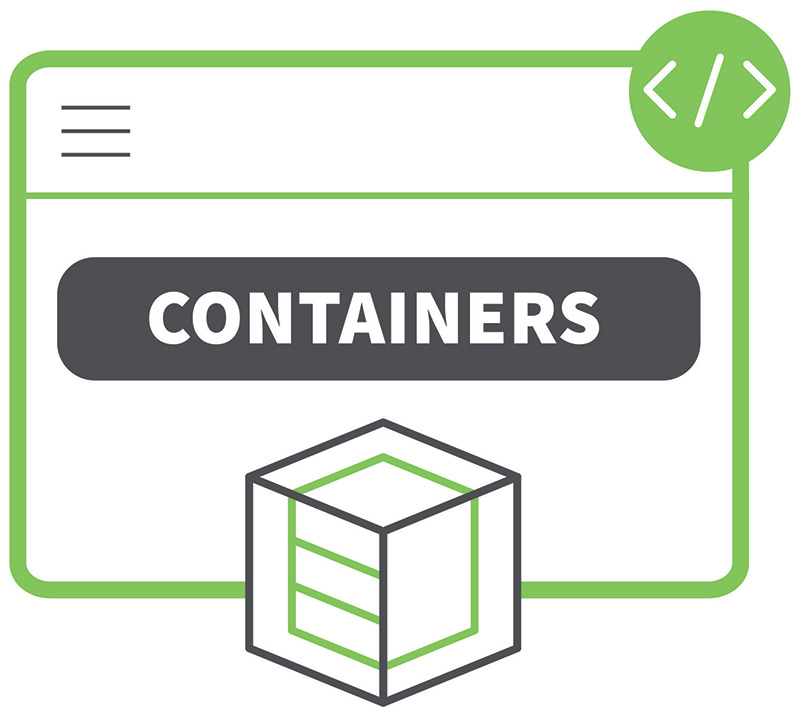 Digi offers a full line of industrial cellular routers purpose-built for heavy-duty industries such as oil and gas. Our industrial routers feature ruggedized enclosures with internal components that can endure extreme temperatures, moisture and dust. Our industrial routers ensure secure cellular network connectivity and serve as your communications backbone in any oil and gas facility environment.
Digi offers a full line of industrial cellular routers purpose-built for heavy-duty industries such as oil and gas. Our industrial routers feature ruggedized enclosures with internal components that can endure extreme temperatures, moisture and dust. Our industrial routers ensure secure cellular network connectivity and serve as your communications backbone in any oil and gas facility environment.
Digi Containers
Available as a value-added service to Digi Remote Manager®, Digi containers empower companies to easily build, deploy and monitor custom applications on devices running DAL OS. With Digi Containers, you can "containerize" applications, so they are lightweight, portable, and secure. Digi-containers take advantage of a cloud architecture that allows developers to develop, distribute and run custom applications.
 Digi Remote Manager
Digi Remote Manager
Digi Remote Manager® is the command center for your entire IoT network, supplying centralized control, management and edge security and network management. The Digi Remote Manager acts as a single pane of glass for continuous monitoring and insights from hundreds of thousands of devices.
Digi offers a wide array of APIs for data externalization task automation. Digi Remote Manager makes it simple to automate mass firmware and software updates, ensures network security, manages out-of-band situations and actively checks device health and connectivity.

IoT in Oil and Gas with Digi
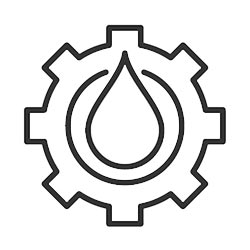 The oil and gas industry faces tough new regulatory rules around emissions. At the same time, it faces competition from alternative energy sources. The bottom line? The oil and gas industry needs to become much more efficient. That’s how the Internet of Things can help. Adding IoT connectivity across all segments of the oil and gas industry will transform the way things get done. From improved safety and operational efficiency to intelligent alerts and automated processes, IoT can reduce costs and improve operations everywhere it is deployed.
The oil and gas industry faces tough new regulatory rules around emissions. At the same time, it faces competition from alternative energy sources. The bottom line? The oil and gas industry needs to become much more efficient. That’s how the Internet of Things can help. Adding IoT connectivity across all segments of the oil and gas industry will transform the way things get done. From improved safety and operational efficiency to intelligent alerts and automated processes, IoT can reduce costs and improve operations everywhere it is deployed.
As a longtime wireless communications partner, Digi has pioneered IoT devices and networks even before the Internet of Things was a thing. Digi offers complete end-to-end IoT solutions, including sensors, a remote monitoring platform and dedicated professional design and implementation teams to help you build your IoT architecture. Partner with us to transform your oil and gas industry operations.
See this oil and gas case study to learn how a major oil and gas operation uses the Digi Remote Manager as a single point of access to streamline and better manage Digi routers and other IoT devices easily, securely and remotely.
Watch our short video to see how Digi industrial IoT oil and gas connectivity solutions support the most critical IoT hardware and software challenges oil and gas companies face.
Next Steps